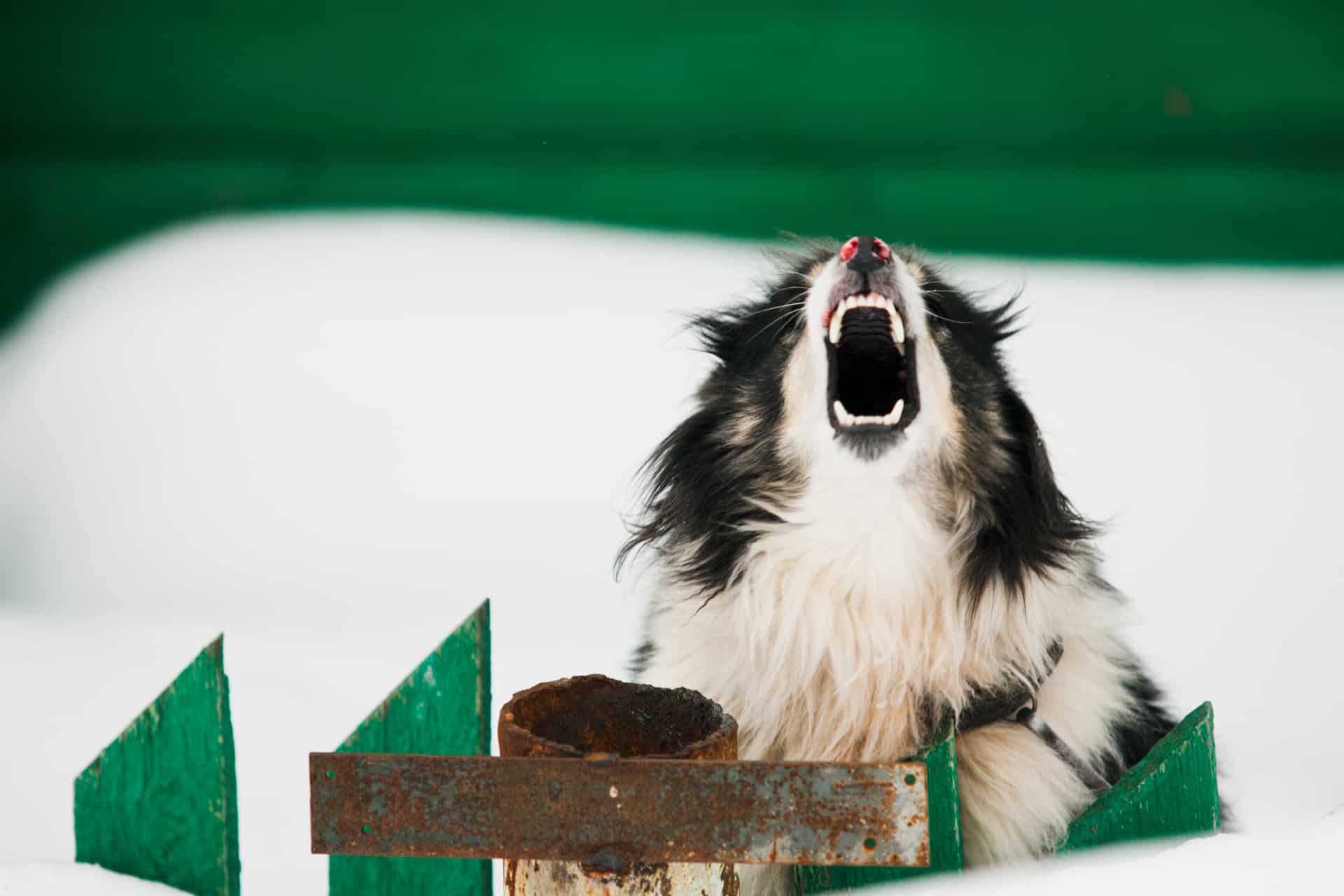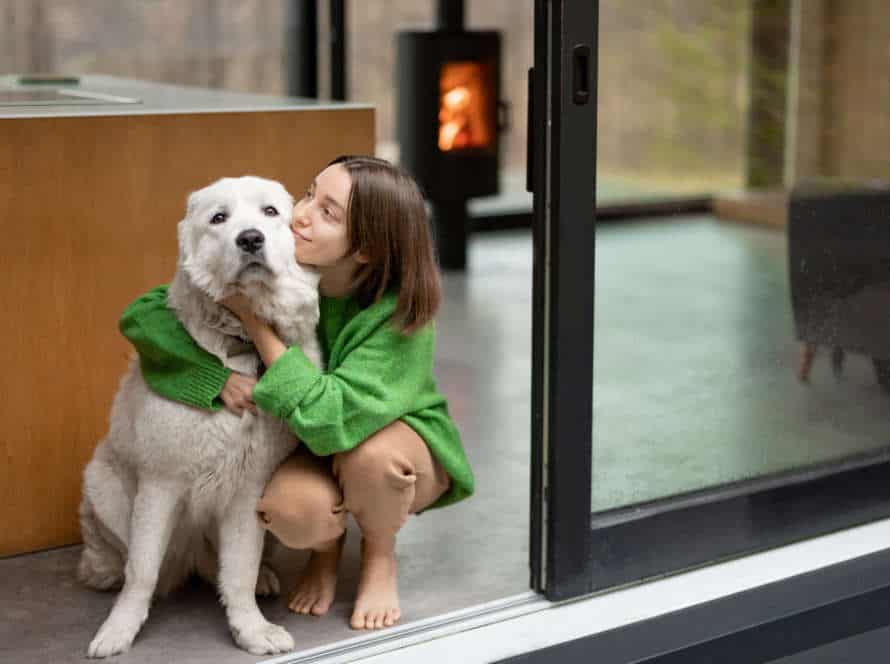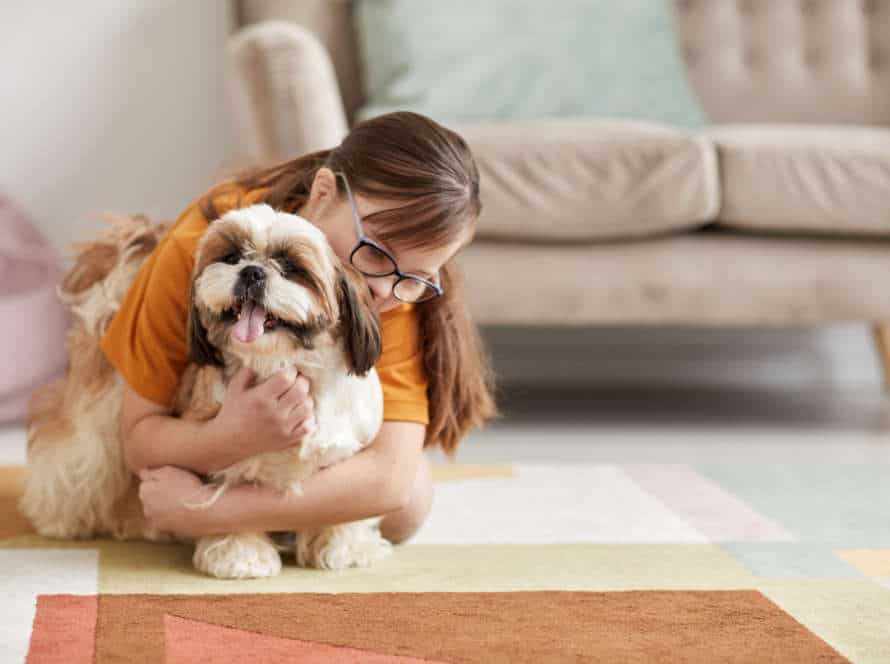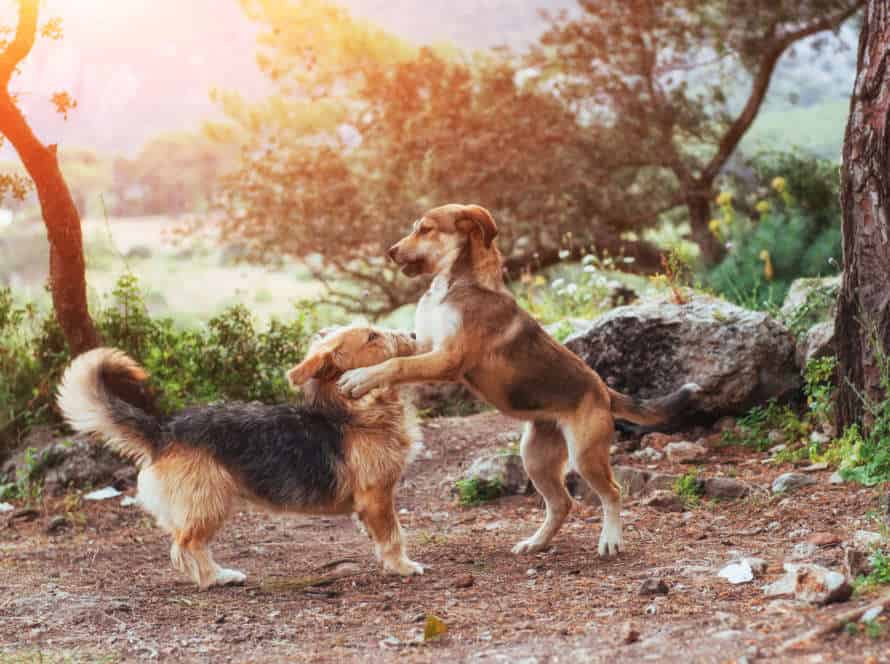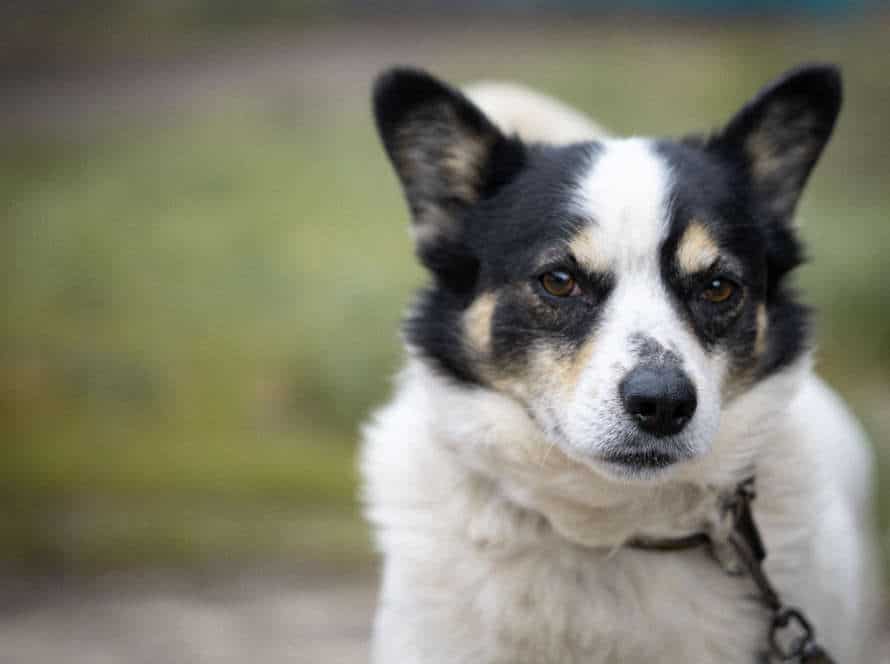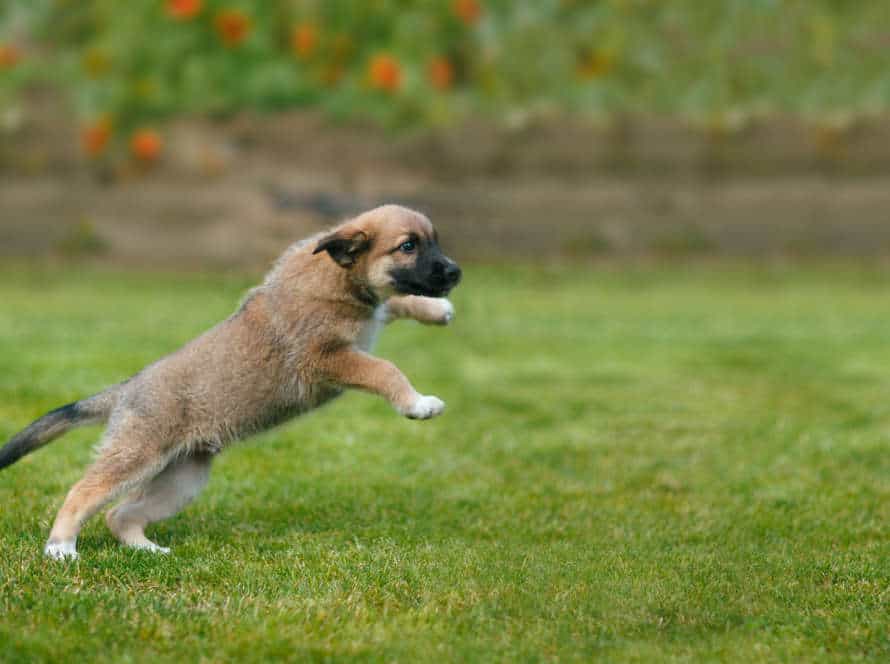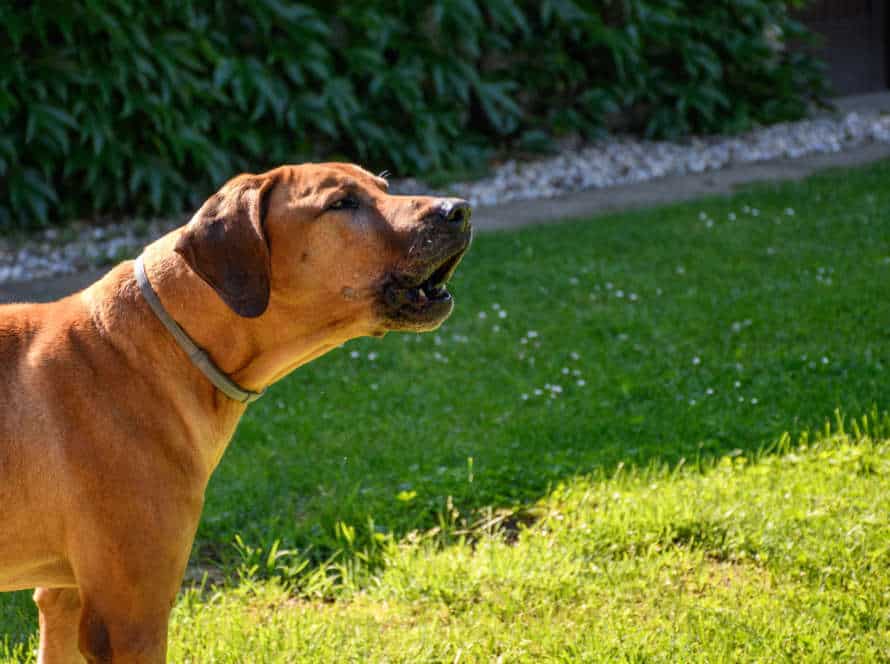Aggression or Protection? Understanding Your Dog’s Motives
It’s key to know your pup’s behavior and body language. Aggression can be growling, barking, biting, lunging at people or animals. It’s usually caused by fear or anxiety and needs a professional to fix it.
Protective behavior is the dog’s instinct when they sense danger. This can be standing between you and an unknown person, barking or growling as a warning. There’s usually a wagging tail and a relaxed body.
To understand aggression or protection, observe their body language, voice, and context. With training and socializing, dogs can learn the difference between actual threats and everyday life, reducing their aggressive behavior.
Pro-tip: Consult a professional trainer or behaviorist to help you figure out your pup’s behavior and make a plan that fits their needs.
Understanding Canine Aggression
Aggression is a normal response dogs use to defend themselves or reach an aim. Getting to grips with what triggers your dog’s aggression and the reasons behind it can help you manage it better. This article will explore the possible reasons why dogs can be aggressive and how to deal with it the best way.
Types of aggression in dogs
Aggression in dogs is often caused by fear or anxiety. There are four types of aggressive behavior to look out for:
- Protective aggression is when dogs feel they need to protect their territory or family.
- Fear aggression is when dogs feel threatened and become aggressive.
- Possessive aggression happens when dogs don’t want to share something, like their food.
- Dominance aggression is when they act aggressively to show they are in charge.
Recognizing the type of aggression your dog is displaying can help you take corrective action.
Common triggers for aggressive behavior
Aggression in dogs is complex. To prevent and address it, we need to understand its triggers. Here are some common ones:
- Fear, when they’re scared.
- Resource guarding, protecting territory or resources.
- Lack of socialization, when they’re not used to new things.
- Pain/illness.
- Hormonal imbalances.
Pro tip: Consult a vet or qualified trainer if your dog is aggressive. Assess the cause and implement a management or behavior modification plan.
How to recognize the warning signs of aggression
It is key to spot the warning signs of aggression in dogs. Especially for dog owners, it is vital to take quick action and evade perilous circumstances that can lead to injury of others and pets. Some examples of these signs include: raised hackles, stiffness of body, snarling, exposing teeth, lunging or attacking and tail wagging with strong intensity.
It is important to get that aggression in dogs can come from diverse sources such as fear, protection, dominance and territoriality. To tackle it efficiently, it is necessary to understand the basic cause of the aggression.
As a dependable pet parent, you must watch your dog’s behavior, socialize them with people & other pooches and ask for professional help if needed. This will guarantee the safety of your furry friend and those around them.
Common Causes of Protective Behavior in Dogs
When your pup acts protectively, it’s usually due to an emotion. Anxiety, possessiveness, or fear can make dogs act in this way. Let’s explore the usual causes of protector behavior in dogs. Also, figure out the difference between aggression and protection.
Understanding your dog’s instinct to protect
Dogs have an inborn instinct to protect their owners and their home. Knowing this instinctive behavior is critical to know the source of protective behavior in dogs and if it is aggression or protection.
One of the typical causes of protective behavior in dogs is fear. When a dog feels their owners are in danger, they may be scared of strangers or other dogs.
Also, insufficient socialization can lead to aggressive behavior towards people they don’t know. If a pup isn’t exposed to different people, events, or places, they could see anything new as a danger to their owners.
Also, past traumas or experiences can cause protective behavior in dogs. Dogs that were hurt or attacked in the past may be overly protective of their owners as a way to defend themselves.
So, it is vital to understand why your pup is acting and their body language to distinguish aggression from protection. It is best to get advice from an expert dog trainer or behaviorist on how to handle and manage protective behavior in dogs.
How to differentiate between protective behavior and aggression
Dogs show protective behavior when they think their territory or family is in danger. This can sometimes be mistaken for aggression. To tell the difference, it’s important to figure out what is causing the behavior.
Common causes of protective behavior in dogs:
- Territorial: Dogs think of their home as their own and will protect it from intruders.
- Fear: Dogs can become protective of their owners or family if they think something is wrong or when they’re in a new place.
- Maternal: Female dogs can be protective of their puppies and show aggression towards anyone they think is a threat.
Pro Tip: Knowing the difference between protective behavior and aggression can help you respond properly and train your dog better.
Potential triggers that cause protective behavior in dogs
It’s key to recognize the main reasons for your pup’s protective behaviour so you can tackle it properly. Common reasons could be:
- Previous mistreatments, such as abuse, negligence or violence.
- Inadequate socializing, like not exposing your doggo to different people, animals and environments during their early stages.
- Inherent behaviour, such as herding or guard dogs that have a natural inclination to be protective.
- Territoriality, when your fur baby feels their home or family is being threatened. This could result in barking, growling or even biting.
To get the best results, reach out to a professional dog behaviourist.
Training Techniques to Address Aggressive or Protective Behavior
Pups may display aggression or protective behavior when they feel threatened. As an owner, it’s essential to comprehend why this is happening and teach them to act differently. Here are some basic training methods to deal with aggressive or protective behavior in your dog:
Positive reinforcement training techniques for dogs
Positive reinforcement training is great for teaching dogs, especially when they show aggressive or protective behavior. To help, it’s key to understand why they act like this.
Often, aggression and guarding is due to fear, worry, stress, not being socialized, or past experiences. Knowing the cause helps you to customize your training methods.
Positive reinforcement involves rewarding good behavior instead of punishing bad behavior. For instance, if your dog protects people or animals, don’t scold them; reward them when they are calm and relaxed.
Here are tips for using positive reinforcement:
- Reward them with treats, compliments and love.
- Use a gentle voice when training.
- Be steady in your training and set clear rules.
- Let your dog hang out with others often, to help them feel more comfortable.
With time and dedication, positive reinforcement can improve your dog’s behavior, and your bond with them.
Corrective training to address aggressive behavior in dogs
Corrective training can be effective in dealing with aggressive behavior in dogs. Figure out the reason for it. Fear, stress, and lack of socialization can all lead to aggression/protection. Make sure to tailor the training to your pet’s unique needs. An approach called “extinction training” is useful. Identify the stimulus that causes aggression and then desensitize the dog to it through controlled exposure. Positive reinforcement is also helpful here. Remember: Patience and consistency are key when training a dog to address their aggression/protection.
Strategies for managing and overcoming protective behavior in dogs
Dogs can show protective behavior in many ways – aggression towards humans or other animals, being territorial, or possessive over things like toys, food, or family members. It’s key to work out the cause to manage this behavior well. It is also important to realise the difference between protective behavior and aggression as approaches may differ.
Here are some useful tips for managing this behavior:
- Socialize your pup with people and other dogs from an early age.
- Use positive reinforcement to teach your dog commands and rules.
- Gradually introduce them to problem triggers.
- Show consistent, confident leadership.
- Seek professional help if needed.
Be aware that each dog is unique and there is no one-size-fits-all approach. Knowing your pup’s motivations and character is vital in creating a successful training plan.
Note: Using physical violence or punishments will only make it worse and damage the relationship you have with your pup. Focus on positive reinforcement and consistent training to build trust and manage protective behavior.
Managing and Preventing Aggressive or Protective Behavior in Dogs
Dogs can show many aggressive or protective behaviors, such as self-defense, communication, or assertiveness. To manage these behaviors, we need to understand the motives behind them. In this section, we’ll cover different types of aggressive and protective behavior. We’ll learn how to recognize them and what steps to take to stop them.
Importance of early socialization and positive reinforcement training
Early socialization and positive reinforcement training: essential for preventing aggression or protectiveness in dogs.
Why?
Early socialization: Puppies need exposure to people, animals, sounds, and environment during their critical 3-4 month period. This helps avoid fear, anxiety and aggression later on.
Positive reinforcement training: Reward desired behaviors like sitting, staying and coming when called. Builds trust, respect, and obedience. More effective than punishment-based training which can cause fear, aggression, etc.
Together: Helps prevent or manage aggressive/protective behavior, creating a happy, well-adjusted dog.
Effective management strategies for dogs with aggressive or protective behavior
Dogs are known to be protective. But, this can sometimes turn aggressive. To handle such behavior, there are management strategies.
To start off, one must understand the motive behind the behavior. Is it aggression or protection of their family, territory or resources?
Preventative measures like training, socialization and forming a routine should be taken. For aggressive dogs, close monitoring and exercise opportunities plus mental stimulation are essential. Positive reinforcement like rewards for good behavior can help manage the aggression or protection.
For more severe cases, contact a professional dog trainer or behaviorist. Lastly, love and patience should be given when approaching your furry friend. Also, the safety of your dog and those around should be prioritized.
Preventing aggressive or protective behavior in dogs through proper training and care
To avoid aggressive or protective behavior in your dog, you gotta understand them. Proper care and training can help. Aggression may come from fear, anxiety, or not socializing. Protection is their natural instinct. Here are some tips:
- Socialize your pup from young age, with people, other dogs, and different places.
- Train them with positive reinforcement to gain trust and obedience.
- Create a safe and predictable environment to reduce fear or anxiety.
- Identify triggers that cause aggression or protection and try to avoid them.
- Reduce stress for your pup by giving exercise, healthy food, and a comfy home.
- If you don’t know how to manage their behavior, seek a professional’s help.
Remember, every dog is unique. It’s essential to know their motives and behavior patterns to keep them happy and healthy.
Frequently Asked Questions
Q: Why does my dog become aggressive towards other animals or people?
A: Aggression in dogs can stem from various reasons such as fear, territorialism, dominance, or a lack of proper socialization. It is important to understand the underlying cause and work on addressing it with proper training and management techniques.
Q: Can aggression in dogs be completely eliminated?
A: While it is possible to manage aggression in dogs, complete elimination of the behavior may not be possible. It is important to work with a professional trainer or behaviorist to develop a plan that focuses on managing the behavior and reducing its frequency and intensity.
Q: How can I tell if my dog is being protective or aggressive?
A: It can be difficult to distinguish between protective behavior and aggression in dogs. Protective behavior is typically provoked when strangers or unfamiliar animals approach their territory or family, while aggression may occur in response to any perceived threat. Consulting with a professional trainer or behaviorist can help you understand how to differentiate between the two.
Q: Can aggression in my dog be a sign of a medical issue?
A: Yes, certain medical issues can cause aggression in dogs. Pain, hormonal imbalances, and neurological conditions can all contribute to aggressive behavior. It is important to rule out any medical issues before starting a behavior modification program.
Q: Is punishment an effective way to modify aggressive behavior in dogs?
A: No, punishment can actually make aggressive behavior worse in dogs. It can cause fear and anxiety which may escalate the aggression. Positive reinforcement training that focuses on rewarding good behavior and redirecting negative behavior is a more effective approach.
Q: Can I train my dog to be less aggressive towards other animals?
A: Yes, with proper training and management techniques, it is possible to reduce aggression towards other animals. Introducing your dog to other animals gradually and under controlled circumstances, along with positive reinforcement training, can help them learn to interact without aggression.

